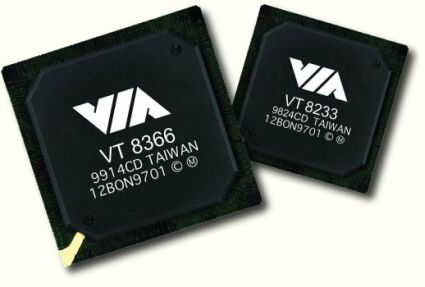VIA's DDR-Runner For Athlon - The Apollo KT266 Chipset
Introduction
In German we have a saying that goes "Gut Ding will Weile haben", meaning something like that good things should not be rushed. This seems to always have been VIA's motto. I still remember the announcement of VIA's first Pentium Pro chipset in 1997, back then already called 'Apollo Pro'. This chipset never made it into production, so that two years later another chipset for Pentium II and Pentium III processors was able to carry the very same name. It wasn't any different with VIA's support of AMD's Athlon processor. It had been the plan to release the Apollo KX133 chipset together with the first Athlon processors. In the end the first Athlon supporters had to go for AMD's 750 chipset and it took no less than 5 months until Apollo KX133 was finally ready for the market.
The story with Athlon combined with DDR-memory doesn't seem much different. AMD's launch of the first Athlon processors with 133 MHz FSB and the first DDR-chipset, the AMD760 , is also about 6 months ago. We have to be fair and admit that it took quite a while until motherboards with 133 MHz FSB support and AMD760 chipset finally hit the market, but there's hardly any excuse why VIA has still not managed to release their highly anticipated DDR-chipset Apollo KT266.
Finally, KT266 is becoming available now. What we are wondering though is if VIA is indeed following the above-mentioned German saying. This saying is not only about the fact that something may take a while longer. It is talking about 'good things'. This would indeed be the best excuse. You can afford to be late, but then you better be damn good. This article will now find out if Apollo KT266 is indeed the 'good thing' that it was worth waiting for. AMD's 760 chipset has so far proven to be very capable to stand its ground. We have already seen one other Taiwanese chipset maker failing to live up to the qualities of AMD's DDR-chipset. The performance of ALi's MaGiK1 chipset is anything but as 'magic' as its name would like to make you believe. Then there is VIA's Apollo KT133A chipset. It comes with 'old fashioned' PC133-support, but works with Athlon processors that run their processor bus at '266' MHz (in reality 133 MHz 'double-pumped'). Even AMD's 760 chipset had problems to provide significantly better performance than this 'beefed up' version of VIA's original Apollo KT133 chipset. Will the DDR-product from the same 'breed' be able to leave its older sibling far behind?
Get Tom's Hardware's best news and in-depth reviews, straight to your inbox.
Current page: Introduction
Next Page The Specifications Of VIA's Apollo KT266